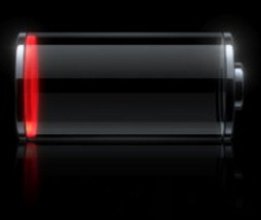LTE Power Consumption Triggers Battery Worry

LTE smartphones offer much faster mobile data access, but reports are also emerging of voracious power consumption
Smartphone makers may have a challenge: their next generation of devices equipped to deal with 4G LTE (Long Term Evolution) look like being serious battery hogs.
Reports are emerging that LTE smartphones, despite offering their users much faster mobile data access speeds, are also responsible for much higher power consumption, prompting worries about the battery life of next generation devices.
Nokia Siemens Networks has reportedly conducted preliminary studies on LTE phones’ power drain versus their 3G counterparts and found that LTE devices consume from 5 percent to 20 percent more than previous-generation phones, depending on the application used. This is according to a recent blog on Gigaom.
Battery Life
That report also poin ted to a review of the Samsung Galaxy Nexus on the Engadget website. The review was conducted in December last year and found that the review unit Nexus was struggling to hold a charge in day-to-day usage with “all the antennas firing”.
ted to a review of the Samsung Galaxy Nexus on the Engadget website. The review was conducted in December last year and found that the review unit Nexus was struggling to hold a charge in day-to-day usage with “all the antennas firing”.
The Samsung Galaxy Nexus is regarded as the flagship Android device since its release in November in the UK.
The Engadget review said that when the Nexus ran Google Navigation over an LTE network (in the United States), it actually consumed the battery power faster than a car charger could restore it.
“We’ve as of yet had very limited time with the thing, but in our 24 hours of intensive testing we had to reach for the charger multiple times,” wrote the Engadget reviewer. “Using Google Navigation with LTE enabled? The battery drained so fast our in-car charger couldn’t keep up, leaving us unsure of which exit to take off the 101.”
Pesky Radios
The most likely culprit for the apparent voracious power consumption of LTE-enabled devices is the radio, which is working a lot harder and more often compared to a 3G handset. At Gigaom points out, the radio is the single biggest power drain in any device (aside from the LED screen), which is why it makes sense to switch off Wi-Fi scanning for example for those keen to preserve their battery life. The radio (unlike the screen) is always on.
Gigaom specifically believes that the increased power consumption is down to the fact that LTE devices use MIMO (multiple input multiple output), which uses multiple parallel transmissions rather that just a single signal. MIMO uses several antennas at both ends of the link, to create multiple channels between the devices. MIMO has been included for example in the IEEE 802.11n version of Wi-Fi.
The LTE handset is also constantly running different LTE links and an additional radio to boot, often because the LTE handset has to maintain constant contact with older 3G networks as well. This, coupled with the fact that the LTE radios are constantly working, even when the phone is in idle mode because it regular casts around for which cell tower it should latch onto, translates into a higher power drain.
Battery Challenge
Therefore it seems that the device makers face another challenge with next generation devices, namely how to ensure LTE radios do not swallow all of the battery life. Apple for example is thought to be close to releasing the iPad3 on 7 March, and many expect it to support LTE.
Last week analysts at Research and Markets claimed that LTE networks could offer the best solution to allow smart grids to communicate.
The research firm believes that the arrival of smart grids will trigger a real need to look at their available communication options (such as fixed-line broadband and wireless), but LTE remains the best bet.